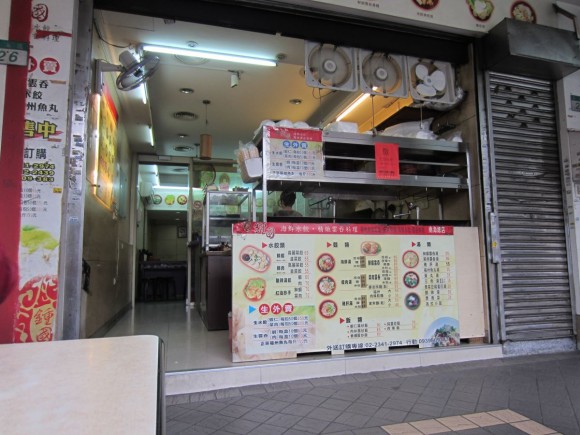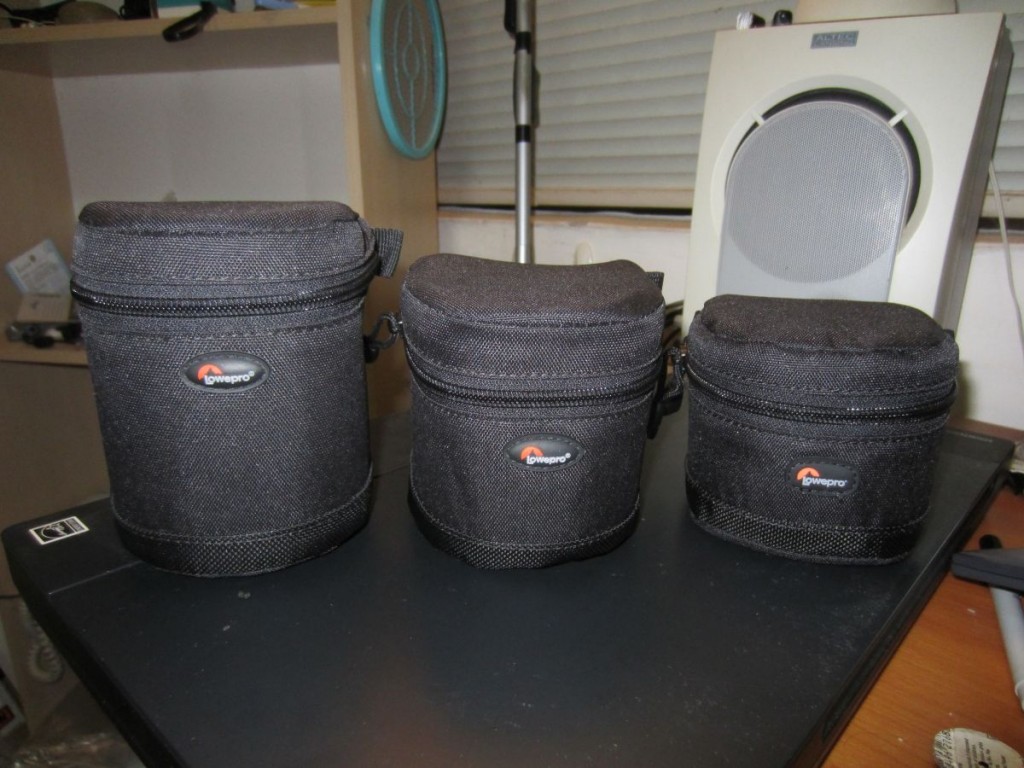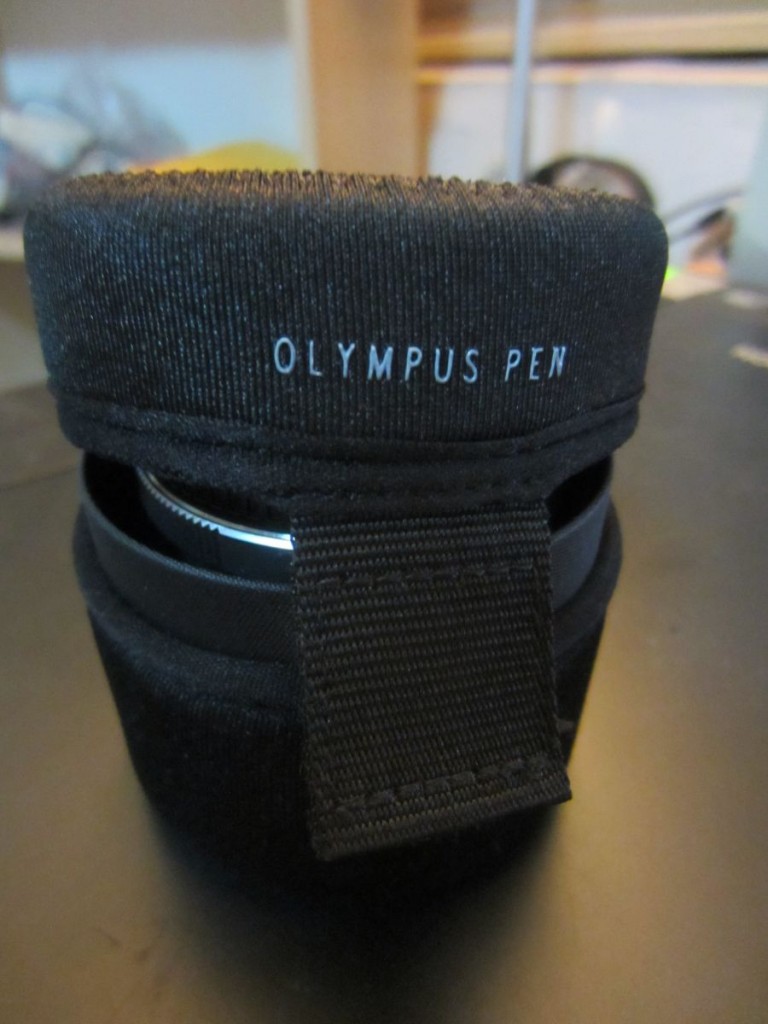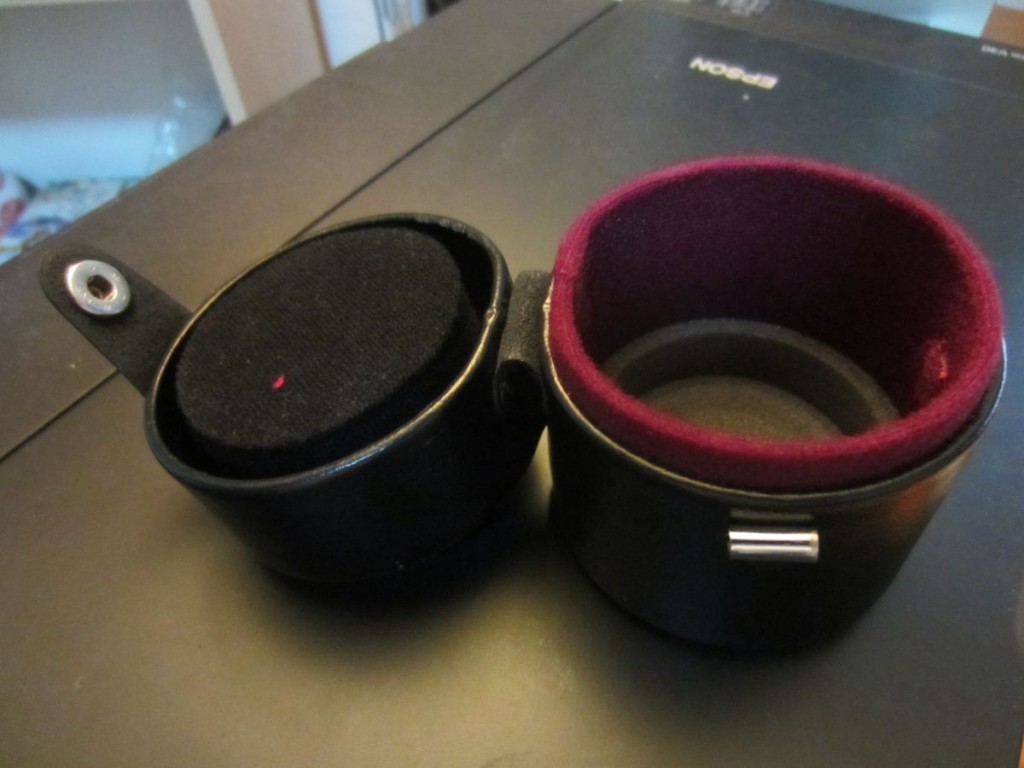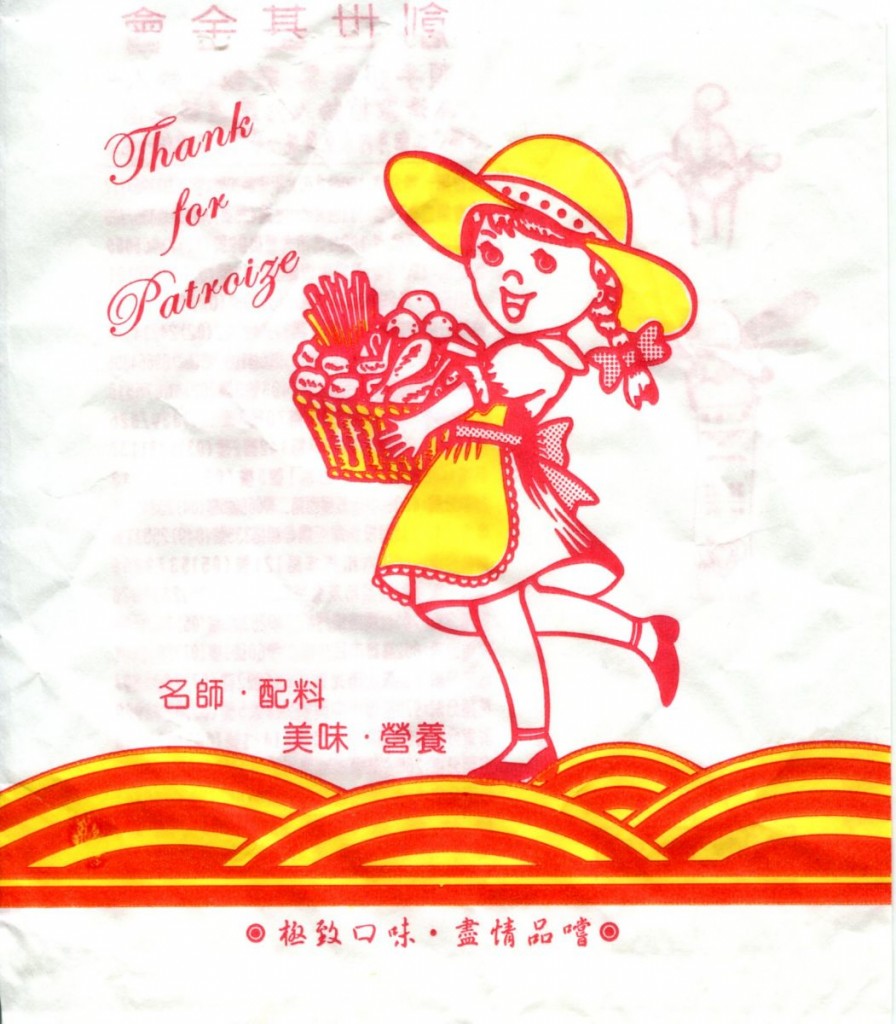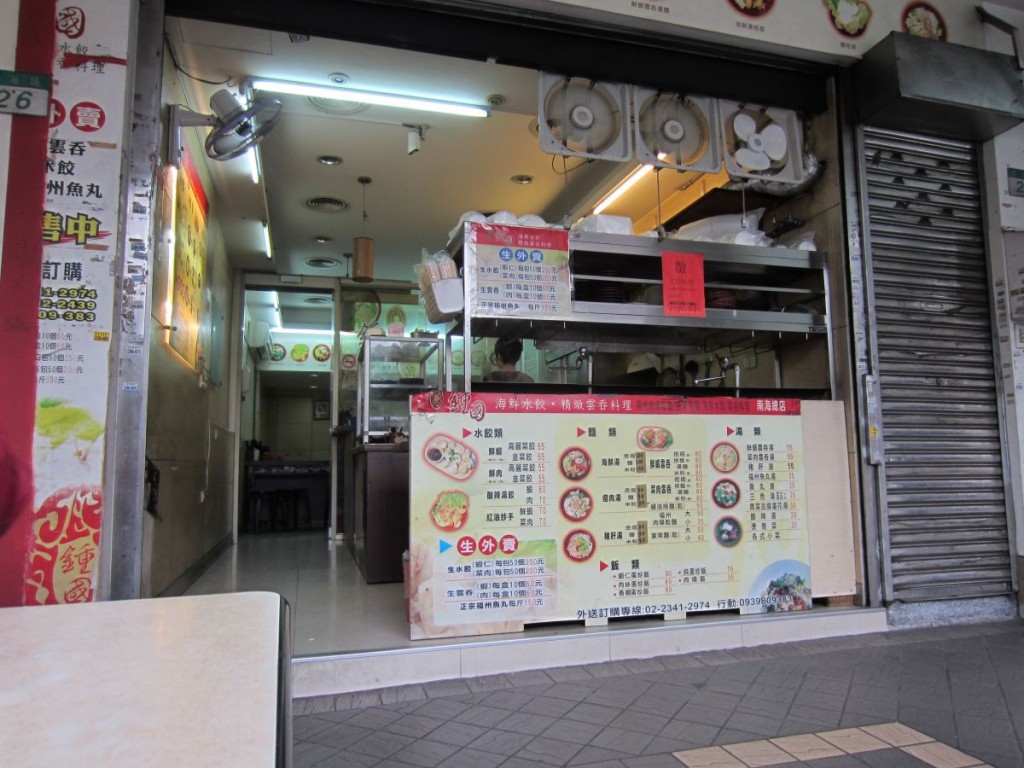Snacking and New Year’s Resolutions
Sunday January 6, 2013
8:00 a.m. over a morning coffee at 7-11
This is too early to be up this morning. I can feel that my body and mind didn’t get enough sleep. However, as usual, I had no choice. I was lying in bed and quite aware that I wasn’t going to be able to go back to sleep. I could either lie there or get up. And here I am – a shower, a shave, a brush of the teeth, and the death of two bathroom mosquitoes later.
I had an interesting Doug-type day yesterday. I had intended to go to the National Palace Museum, but I had some trip-related errands to run and I was more interested in those. So after my morning coffee and a brief sojourn at my apartment getting organized, I set off into Taipei’s camera district.
My first errand was to find suitable lens cases for my various Olympus lenses. I’m sure I’ve written about this before. I’m rather obsessed with bags and cases. I say I’m obsessed, but, to be honest, I’m not sure how one can’t be somewhat interested in them. I have some very expensive lenses for my Olympus camera, and I can’t just toss them into a Ziploc bag. Like it or not, I have to put them inside some kind of protective case in order to carry them around. It’s the sort of thing that in an ideal world would be taken care of in two minutes. In an ideal world, you wouldn’t have to worry about it at all. A nice case would come with the lens when you buy it. Most of the time, though, lenses do not come with protective cases. They might come with a bag or a sack of some kind, but they don’t offer much protection. And Olympus lenses don’t come with anything at all. You get the lens and nothing else.
When going out to buy lens cases, I ran into two problems. The first was that the camera industry does not make lens cases to fit the tiny lenses for the micro four-thirds camera systems. Lowe-pro, for example, is probably the largest maker of camera bags and lens cases in the world, and they make cases only for SLR lenses – quite large cases, in fact. So finding an appropriate lens case is not as easy as just picking the right one off the shelf.
I did some research online and I tracked down all the dimensions of the various Lowe-Pro lens cases and those from other big manufacturers. A couple of these cases could be modified in some way to fit one or two of my lenses. That’s because I also have the lens hoods for these lenses, and the lens hoods can’t always be turned around and fitted over the lens. The Olympus 12mm lens, for example, requires a square lens hood. The lens does not come with the lens hood and if you want it you have to purchase it separately – at an exorbitant cost. I did buy one, and the lens hood nearly doubles the size of the lens. Therefore, the 12mm lens, though extremely tiny, will actually fit quite snugly inside the Lowe-Pro 1M lens case with the lens hood attached. The same goes for my Panasonic 25mm lens. It came with a lens hood in the box. I could probably get away with not using the lens hoods and then my lenses would be smaller, but they do improve the quality of the image considerably in some situations and they provide a great deal of protection for the lens. So I made the decision not to agonize over the lens hoods and just put them on all the lenses and leave them on and just get used to them. So the Panasonic 25mm lens also ends up almost double in size once you add the lens hood. And therefore, it fits quite snugly inside the Lowe-Pro 1S lens case. It seems a bit counter-productive to buy into a camera system that has as one of its advantages tiny lenses and then end up putting them inside full-size cases anyway, but that’s the way it goes. That’s two lenses down. My 75mm Olympus lens also fits fairly well into the Lowe-Pro 1S lens case. Luckily, the lens hood for the 75mm (which also must be purchased separately and is extremely expensive) is round and very well designed, so it can be turned around and be fitted over the lens for storage. Therefore, it does not require a huge case. I could even get away with a much smaller case, but I can’t find one that fits the 75mm snugly. The Lowe-Pro 1S is the best I’ve come up with, and it works fine.
I’d also already purchased an official Olympus lens case, the CS-22. This lens case has caused me a great deal of mental anguish because it comes at the usual premium price for Olympus-branded accessories, and yet is something of a piece of junk. At least when you pay princely amounts for the lens hoods for the 12mm, 75mm, and 60mm lenses, you really get something for your money. They are beautiful lens hoods – extremely well designed and well machined. They are practically works of art and could sit on a pedestal in a design museum quite comfortably. This CS-22 lens case is an insult to Olympus customers everywhere. I’m embarrassed to say that I paid something like $42 for it on eBay plus an additional $15 or $20 for shipping. I told myself it would be worth it based on the high quality of the other Olympus products. Well, I felt like a total fool when this CS-22 lens case arrived. With its flimsy construction and tiny single velcro tab to hold it closed, it might be worth $5. And even that’s stretching it. Charging as much as they do is pure robbery on the part of Olympus. I love my Olympus camera and all the lenses. You could argue that the system is over-priced when you consider that we’re talking about a micro four-thirds system with that tiny four-thirds sensor at the heart of it. However, the image quality is superb and the build quality is exceptional. You really do get what you pay for. But not when it comes to this CS-22 case.
Anyway, the CS-22 is tiny little thing and is the perfect size for my 9-18 zoom. So, to be honest, when it came to lens cases, I was pretty much covered. I just had to pick up a second Lowe-Pro 1S case. And then I had to find something for the 45mm lens and the 60mm macro lens. That was my task for the day, and I got very lucky.
On my visits to Taipei’s camera districts, I’d noticed a few old-fashioned camera shops – the kind of places that deal with used cameras – and I wondered if they might have tucked away in the back somewhere boxes of old lens cases – just a random collection of stuff that I could root through. And I found such a place on my very first try. The original guy I talked to – a young guy of course – was not that helpful. He listened to what I was looking for and sort of looked in a cabinet behind him and then said there was nothing. He didn’t seem to look very hard, though, and I pushed a little bit. So he went to the back and spoke to man in his sixties. This man was certainly the owner of the shop and probably the younger man’s father. Well, this older man had more of the old-school sense of customer service and he instantly grasped what I was looking for. Then he turned behind him to that same large cupboard, opened the door wide and swept out armful after armful of old camera cases and lens cases. It was a treasure trove. He looked through that pile – with my help – until we came up with a single Panasonic lens case from the old days – a hard and very tiny case. It was a perfect fit for my 45mm lens. The price? NT$200 or about $6.50 U.S. I might go back to that store today to see if one of those old camera cases would fit around my Olympus and serve as a protective cover.
After that, my luck ran out for a while. I wanted to purchase a Lowe-Pro 1S case. I knew exactly what I wanted and this is a modern case, but no store carried it. I swear I hit every single camera store in the camera district and no one carried it. The thing is that lens cases are not that popular in Taiwan. Most of these stores had entire walls, rooms, and even entire floors filled with camera bags – large bags designed to carry a camera body or two plus many, many lenses. That appears to be the preferred approach. So there is not much demand for individual lens cases. I eventually gave up on the Lowe-Pro 1S. I know that it is available somewhere in Taipei and I’ll track one down eventually.
That left a case for my 60mm macro lens, and that was proving to be difficult to locate. The 60mm would fit inside a Lowe-Pro 1S, but it wasn’t ideal. This lens is quite skinny and long and the 1S is far too wide. I need something narrower. Then I remembered a little shop I’d passed a number of times on my visits to the Taiwan Natural History Museum and the Botanical Gardens. It was a tiny photo-processing shop – something that has probably been there for forty or fifty years and got left behind and forgotten by the march of progress. I noticed this store because on the other side of the dirty front window I saw piles of old film cameras and a random assort of bags and cases and other gear – all mismatched and just thrown into a big pile.
I hopped on the MRT and zipped over to Chiang-Kai Shek Memorial station. From there, it is a ten-minute walk to this little shop. On the way, I picked up a little snack from a street vendor – delicious – and then a little cup of pudding from a small shop. This is in keeping with a tiny New Year’s Resolution that I’ve made.
Now, I’m not a big fan of New Year’s Resolution. I find that people are pretty much who they are at any point in time. We do things as we like to do them. And if we don’t do other things it’s because they don’t suit us. What I’m saying is that you can’t force behavior. People behave as they choose and it comes naturally. If you don’t do certain good things or you do do certain bad things, there are deep-seated reasons for that. If you never exercise, it’s probably because you hate exercising. And fair enough. Simply making a New Year’s Resolution that you will exercise more is not going to accomplish anything. So in the end, making a long list of New Year’s Resolutions is no more than listing all of the things about yourself that you don’t like. It’s like listing all your faults. And that is hardly a positive way to begin a new year.
However, there is endless allure in the idea of fresh starts and new beginnings – in wiping the slate clean and beginning anew with hope and dreams. So the idea of making resolutions for the new year has a powerful draw on us. Essentially, it’s fun.
I was at a New Year’s Day concert at the National Concert Hall and making small talk before the concert began. I asked the woman I was with if she had made any New Year’s Resolutions. To my surprise, she didn’t know what they were. She hadn’t heard of this practice before, and I tried to explain it to her. I told her that I wasn’t that into making resolutions, but that if I did make one it would be to follow through on impulses more often. I have a certain inertia about me when it comes to doing things. For example, there is a little food stall that sits on the corner of my alley. It shows up every few days and I’ve seen it for years and years. Every time I see it, I wonder what kind of snack it is that the woman sells. And I have this tiny little urge to stop and buy one. But I never have. Not in all this time. I pass this little stall on wheels day after day after day and each time I think that I should buy one of those snacks and see what they are. But I never do.
This inertia shows up in all aspects of my life and I’ve been very aware of it. In fact, this inertia is probably the main reason for some of the largest behaviors in my life. The two I can think of are keeping an extensive journal and bicycle touring. The thing is that if I stay in one place and fall into a routine, it is very hard for new and interesting things to enter my life. So in the morning, I will write in a journal and take stock of things and through the writing, I will make plans to do new things. And it works the other way, too. I know that the following morning, I will be writing in my journal. So I will set off on the previous day intending to have adventures so that I will have something to write about. Sitting here in my familiar neighborhood, I will probably not pop into that little restaurant over there that I’ve never tried. However, if I hop on my scooter and drive into the mountains to some new area, I will naturally have new experiences. I will end up popping into some new and interesting restaurant because all the restaurants up there are new.
And that’s how it works with bike touring, too. I noticed that when traveling as a backpacker – taking buses and trains, etc. – it was difficult to do new things. It’s hard for example, to wake up in the morning and head off to some interesting area. You have to figure out transportation and all the logistical details. But if you make just one big decision at the beginning of your trip – e.g. to ride a bicycle – then you have endless adventures every single day. You have no choice but to end up in all these tiny and interesting places and having all these new experiences. The new experiences come and find you, and then this inertia becomes a non-issue.
This inertia is also why I enjoy hanging out with a certain type of person – a very emotional person that seeks out pleasure and is fearless in the face of newness. I like to spend time with people like that because it opens up the world and I can absorb some of their courage and sense of adventure. For them, it comes naturally. I have to work at it.
So I told my friend that night that if I made a New Year’s Resolution, it would be to follow through on impulses and, by extension, to do something new every day. I don’t think I explained myself very well that night, but I knew precisely what I meant by this resolution. And having that little snack outside the Chiang-Kai Shek Memorial MRT station was a good example of it. Normally, I might have smelled the delicious snacks. I would have looked at the snacks and thought about buying one. But then I’d walk on by. Food isn’t that big a deal with me anyway. Yet, I did have the impulse to buy one. So why didn’t I? Just inertia or fear, I guess. Fear of the unknown or an unwillingness to get into complicated situations. So this time, I followed through on my New Year’s Resolution and stopped at the stall and bought one of the snacks. And it was amazingly delicious. It was awesome. Then, a couple of blocks further down the street, I passed a little neighborhood bakery. I often see these bakeries around and I might glance in the window and think, “Oh, that looks tasty. I wonder what that is. Oooh, look at that.” But I never go in. It seems like too much trouble. But buoyed by the success of my street stall snack, I popped into the bakery and bought one of the little cups of pudding in the window. Delicious. Then, a little dumpling shop caught my eye and I ordered a plate of dumplings. They were so, so, so good. Finally, I was walking through the neighborhood around the Gonguan MRT station, and a woman was just setting up a fruit stall and she was setting out little bags of pre-sliced fruit. I picked up a bag of sliced cantaloupe or something and munched on it as I walked along.
None of these experiences were new to me, of course. I’d eaten dumplings at dumpling shops before of course. I’d had that pudding. I’d had that other little snack. But I tend to do these things as one-off adventures – a new thing to try and then never do a second time. I rarely fold such little things into my day-to-day life. It seems like too much trouble.
So my follow-through-on-impulses resolution is a pretty good one. I think it even helped my mood, because I generally don’t snack, and I go through long periods of being hungry in between my regular meals. Being hungry leads to irritability. So having all those little snacks throughout the day was nice for a change.
I think, in fact, that this type of resolution fits into my theory above about human behavior and why I generally have no use for New Year’s Resolutions. Resolutions too often are things that we simply don’t want to do anyway. What’s the point of resolving to do something that deep down you really don’t want to do anyway? You’re just setting yourself up for failure. And, as I said originally, it seems to be more of a list of one’s faults than anything else. But a resolution like this one is useful because it ties in with something that I want to do anyway. I have these impulses all the time. My resolution would be to simply act on them.
Back to my story of errands: I was on my way to that little camera shop when I started snacking and acting on impulse. The older man inside the camera shop was very friendly and once he understood what I was looking for, he happily rummaged around in his shop to find any lens cases that might suit me. He actually found a Panasonic case identical to the one I’d just purchased. His, unfortunately, was extremely dirty and old and smelly and all the foam inside had turned into toxic dust. He had actual garbage bags filled with old camera cases, camera bags, and lens cases. Only one was even remotely useful for me though. This lens case was a very long and thin case. Being very thin it was exactly the right size for my 60mm lens. The problem was its length. I didn’t think it would work out, but for NT$200 it seemed worth taking a chance on it, and I bought it. My plan is to cut out a middle section to make it shorter and somehow hold the two halves together with duct tape. It’s worth a try anyway.
That was it for my lens case errands. This had actually taken many hours to accomplish and I had walked great distances. My other errand was to find some kind of grip or cushioning that I could add to the bar ends on my bicycle. I had gone to a Giant bike shop on Friday and checked out what they had. Giant bike shops are very common on Taipei, but they tend to carry very little of interest to me. And this Giant shop did not disappoint in that regard, and they had nothing that suited my purposes. Since I was out and about on my lens case errand, I decided to ride the MRT down to Gonguan station and then walk to my favorite bike shop in Taipei – Alan’s Bike Shop.
I’d been to Alan’s Bike Shop a number of times before. It’s run by a wonderful husband and wife team. The husband is a bike fanatic and a mechanical genius. He loves bikes and bicycling and even takes people out on weekend rides. It isn’t just a business for him. It’s a passion. And his wife is equally wonderful. She’s friendly and helpful and speaks excellent English and will work with her customers as long as they need to find something that will work for them. I’d brought my bicycle to their shop a number of times for repairs and tune-ups. I’d also purchased pannier bags and lots of other items from them over the years. Their shop is the only one in Taipei I’ve found that carries any kind of touring cycling gear. There might be other shops in Taipei that do, but I’ve never found them. They certainly don’t have a big range of touring gear. There isn’t a big demand for that sort of thing in Taiwan, and it isn’t worth it to them to keep much in stock. However, it’s nice to find a shop that at least carries a little bit and knows what I’m talking about when I bring up pannier racks and pannier bags and butterfly handlebars.
I hadn’t been back to Alan’s Bike Shop in the last three years since my return to Taiwan. I’ve become a scooter rider rather than a cyclist, so my bicycle has been sitting around unused. Now, however, as I plan my trip to the Philippines and beyond, it was time to drop in. I had no trouble remembering where their shop was located. I was only worried that they would have closed or moved. But the shop was still there and it was open. It took a minute or two for them to recognize me, but they did and we had a good long chat as we talked about bikes. I was very happy to see that they even had a Surly Long Haul Trucker in the shop. I’d been reading about this bike for years, and I had never actually seen one in person. I’ve been thinking about getting rid of my beast of a mountain bike and picking up a Surly Long Haul Trucker instead. It’s made by a small company in the United States and is a wonderful touring bike. It is essentially a regular steel frame with rigid forks. It has a touring geometry and comes fully set up for touring with wonderful pannier racks on the back and front, braze-ons for water bottle cages, etc., drop handlebars for touring, wide forks to accommodate wide tires and fenders, and all the other features that make a good touring bike such a joy. It’s a simple and elegant and strong machine that can take a heavy load and take you around the world comfortably. And the price is fantastic. The model they had in the shop was a 2012 and they were asking for NT$41,000. If I hadn’t already invested a fair amount of money in getting my Route 66 beast of a bike repaired and tuned up, I’d probably pick up a Surly Long Haul Trucker.
While I was at the shop, I looked over all the various grips and things that might conceivably work with my bar ends. It’s not a very large shop, but they had twenty times more options than the huge Giant shop I had visited. As always, I was trying to do something that you aren’t really supposed to do. Grips go on handlebars. They don’t go on bar ends. In fact, you aren’t supposed to use the bits on top of bar ends as places to rest your hands. You do hold on to the vertical portion of the bar ends. But my bar ends have this horizontal bit as well. And I have the habit of using that bit as another hand position when I ride. However, it is a hard bit of steel and it hurts my hand. So I took some old handlebar grips and cut them to size and jammed them on. They worked for a while, but the bar ends are wider than handlebars so the rubber eventually split. If I were looking for grips for my handlebars, I’d have been done in two seconds. However, I was trying to find a grip for bar ends. I always seem to be wanting to do something unusual. The better option is probably to change my straight handlebars for butterfly handlebars. I will probably ask about that when I go back to the shop on Monday. I decided, after much testing and thinking, that simply using handlebar tape would be the best option. So I’m going to ride my bike to their shop on Monday after my visit to the Travel Clinic for my vaccinations and have them try to install handlebar tape. It may or may not work. The only way to know for sure is to try. Riding my bike there will be my first time on that bike in three years! Crazy.
Tags: bike, bike touring, Lowe Pro, New Year, Taipei, Taipei Alan

